|
You’re driving along a winding mountain road late at night. The radio is once again playing that song from The Breakfast Club that you’d sooner forget and you’re becoming sleepy. You change the station in the hopes of hearing some invigorating Pantera, but you are instead treated to that terrible song from Katy Perry about her transforming herself into a lion or tiger or something. If you don’t get some stimulation, you could fall asleep and slip off the road into the valley below. Should this happen – and if you survive – your Geico payments are going to go through the roof. As you ponder this dilemma, you suddenly spy what looks to be a woman standing alone on the side of the road. She’s hitchhiking. Though you realize that this is fairly odd behavior in 2024, you must admit that you momentarily forgot that you were tired. Maybe chatting with a stranger you pick up on the side of the road could help pass the time until you get into town? What could go wrong? As she falls more clearly in line with your headlights, you notice that she’s wearing a white dress, is fairly attractive, and has long black hair flowing over her shoulders. Though not exactly dressed for hiking in the mountains at night, she probably has an interesting tale to tell. On a whim, you stop the car, put on your blinkers, and invite this mysterious lady into your car. She gets in the back of the car as if you were her Uber driver. Odd. Oh well, if this helps avoid a sleep-driving incident, you can tolerate a bit of haughtiness. You then slam on the gas pedal to get the car moving before you get rear-ended by another driver. When the engine quiets down, you try to engage the lady in a bit of light conversation. No response. As you peek at her in the rearview mirror, you notice that she’s completely ignoring you. Sadly, this is starting to feel like junior high school all over again... You glance back, more closely this time, and notice that she has a disappointed, wistful, almost melancholic expression on her face as she stares out the window. You are just about to ask her if she’s OK when you notice that a big turn is coming, so you focus on the road so that bad things don’t happen. After you pass the curve, you return your attention to the dour hitchhiker and, looking back in the mirror, come to the startling realization that she’s gone(!!). How can this be? Did she pass out on the floor? Could she have jumped out of a moving car without making a sound? You are deeply unsettled, so you stop at the first pullover you see and get out. You search the back seat of the car only to find that crumpled old Taco Bell bag from last week and an old box of sun-bleached Kleenex. No hitchhiker. There’s not even a single strand of her long black hair… Strange tales like these have been told about a short stretch of highway near Altoona Pennsylvania for decades. In fact, for one of us, this was the very first ghost story they ever heard. As with many ghost stories attached to a particular area, there are some variations. There are people who claimed to have seen the lady walking and there are also stories of her getting in the front seat. We’ve also heard that she screams a lot, and if you hear three screams from this ghostly lady in white, you die. Pretty dramatic stuff for a small city in Pennsylvania Even though Altoona isn’t big, it has had a pretty interesting history. It’s primarily known today for Boyer Candy Company – the makers of Mallo-cups (i.e., like Reese’s peanut butter cups but with coconut marshmallow replacing the peanut butter) and Clark Bars, which taste like peanut butter and toffee coated in chocolate. Altoona is also home to the Railroaders Memorial Museum and is the birthplace of Sheetz convenience stories. However, it’s probably most famous for the Horseshoe Curve, a massive set of three train tracks that spans two ravines and is shaped like – you guessed it – a big horseshoe. It was such a key piece of US infrastructure that Hitler sent a German U-Boat to Long Island that dropped off four Nazis with sabotage on their mind. Their dastardly plan was to destroy the curve. This secret mission even had a name: Operation Pastorius. Fortunately, the Nazis failed after the FBI caught wind of the plot. Among dark tourists and paranormal investigators, though, the Altoona area is far more famous for being the haunt of the “White Lady of Wopsohonock (Wopsy) Mountain” or, more simply, “The Ghost of Wopsy”. But how did she come to mess with people dumb enough to pick up hitchhiker’s while driving? Shortly after the horseshoe curve was created, a fancy hotel was built high on the beautiful Wopsohonock mountain right outside of Altoona. More like a resort, this hotel was quite posh, with 60 rooms, a bowling alley, shooting range, etc. It also had a four-story lookout tower that, on a clear day, afforded unobstructed views of several different Pennsylvania counties. However, to get to the Hotel or the lookout tower, you had to drive either a car or horse-drawn carriage up a very treacherous road. At a key point, if you deviated from the road, you would have a steep (i.e., deadly) drop down to the valley far below. This part of the road has been called “The Devil’s Elbow”. Multiple deaths resulting from vehicles careening off this road have been documented for years, and local police still struggle to deal with the aftermath of these unfortunate incidents. The dangerousness of the Devil’s Elbow remains despite the more modern metal guardrails. It should therefore surprise no one that the Ghost is associated with the Elbow. In one of the more popular origin stories for the Ghost, a young couple in a forbidden romance (of course), decides to elope. The drive down the treacherous pass and skid their car off the devil’s elbow. Both perish from an accident, and the woman’s spirit continues to haunt that stretch of highway today, searching in vain for her lost lover.
Another story describes how, before the lady became a ghost, she was stood up on her wedding day. Wracked with grief and embarrassment, she soon died in an automobile crash and was burned to death. Beset with a post-mortem desire for vengeance, she now lurks in the area, bothering potential lovers who park at the lookout. If you hear her scream three times, you and your lover will die. So, make sure to turn up some romantic Pantera songs whenever you're necking in the Wopsohonock. However, local historians trace the original story for the “ghost” all the way back to 1926. The tale goes something like this… A man and woman were bootlegging moonshine from Cambria County into Blair County. Their car skidded off the road and fell down the embankment of the Devil’s Elbow. The woman, (we’ll call her Mrs. G to protect relatives who still live in the area) died in the hospital shortly after the crash. The man in the car (Mr. T – not the one with the mohawk) wasn't her husband, however, and some salacious rumors soon began to spread. Interestingly, the man survived and, after being cleared of manslaughter charges, later became prominent in Altoona politics (it turns out that Ted Kennedy’s Chappaquiddick scandal was not really that unique after all). According to Dr. Jared Frederick, a historian at Penn State’s Altoona campus, this tale has many features of what helps create a good ghost story. Namely, there is an abrupt death, lost love (i.e., Mrs. G had a husband and five children she would never see again), and a potential miscarriage of justice. We would also throw in the fact that a dangerously famous location and the potential for flapper-era salaciousness doesn’t hurt either. Therefore, it’s possible that the spectral hitchhiker and terminal screamer famous around this lonely stretch of Pennsylvania highway might just be the disembodied spirit of Mrs. G clad in alabaster white and meting out vengeance for that potential miscarriage of justice. We’re not quite sure what righting wrongs has to do with scaring driver’s out of their wits and killing couples who make out in parked cars, but we’re obviously not fancy paranormal investigators. We’re just a couple of dark tourists who enjoy a good ghost story every now and then. Feel free to post if you have any of your own. Directions The Wopsohonock lookout can be found on the aptly named Look Out Road in Dysart, PA 16636. Even though the four-level lookout tower burned to the ground (along with the Wopsohonock Hotel) in 1903, you can still get scenic views of the area. It is particularly nice when leaves change color in the fall. You can find the Devil’s Elbow nearby (i.e., on the way back to Altoona). If you REALLY want to find the exact location, just ask a local or do a quick online search. We would publish the coordinates, but we don’t want to encourage people to do what we did (i.e., hang out of the car taking pictures while driving) and feel responsible for any deadly aftermath that might ensue. Please don’t try this for yourselves, we’re professional degenerates. Side Trips The Horseshoe Curve is a short drive away and would be a shame to miss if you're in the area. If you fancy a drink after ghost-hunting, the Knickerbocker Tavern (3957 6th Ave, Altoona, PA 16602) has an incredible selection of bourbons and other spirits and a very nice, relaxed atmosphere. Should you have children or just want to act like one, you could visit DelGrosso’s Amusement Park and Laguna Splash Water Park in nearby Tipton, PA
1 Comment
- Is the path to hell paved with refreshing Czech pilsner?? - Czechia (i.e., what Czechs call the Czech Republic) is one of our top three favorite countries to visit. It’s an even better destination when you don’t have work to do there, but it is great regardless. If you fancy castles, amazing beer, dumplings, and strange tourist sites, Czechia is difficult to beat. There are so many great castles (hrady) dotted around the country, but one, Houska, is undeniably unique. In many ways Hrad Houska doesn’t make any sense. For instance, most castles are built over a consistent source of water. After all, how terrible would it be to suffer a siege on your castle and have nothing to brew tasty pilsner beer with? Yet, Houska has no source of water except for cisterns to collect rain. Odd… Hrad Houska also lacks a kitchen. So where would a hungry soldier bake bread to enjoy his refreshing pilsner with? Strange… Further, most people building a castle would probably want the defensive side of their walls to face outward. This generally helps if you want to repel invaders. However, Hrad Houska’s defensive walls face inwards. Perplexing… All of this seems odd or even illogical until you add the missing premise… it was clearly built to cover up the gateway to hell. Yes, dear readers, a bottomless pit of eldritch danger lurks a mere hour’s drive north of Prague, and under the location of the present-day castle. Oh, the legends that surround this place. The tales speak of half-human, half-animal creatures that would emerge at night from the accursed pit and lay waste to any people unfortunate enough to cross their paths. This situation clearly had to change. It’s bad enough when a megachurch or Applebee’s moves into your neighborhood, let alone a fiery pit to hell. There’s only so much a real estate market can take before property values decline. The locals still speak of how prisoners were used to build the fortress. Builders apparently conscripted one poor convict to be lowered by rope into the accursed chasm. Upon hearing his plaintive screams, they pulled him back up only to find him aged thirty years in as many seconds. His hair turned whiter than Anderson Cooper’s and his skin looked as if he was any elderly Hollywood celebrity in the midst of a month-long Botox shortage. It was terrifying to witness. Even after the castle’s construction, the dark rumors persisted. It was even occupied by Nazis until 1945. We may never know what evil experiments, medical, occult, or otherwise, took place within its cold stone walls. Now, how much of these fun legends are true? Well, to be fair, there are some alternate histories out there. Some are backed up with historical and archaeological data that describe other motives for the castle’s construction (why do scholars always take the fun out of things… ?). However, we prefer to live in a world where Hrad Houska is our last line of defense from the many horrors of hell. Even better (i.e., a PD film script idea), we hope that, nearby, there lives a secret sect of plucky Czech warrior-poets who risk their lives every day to protect us from the ever-present scourge of demonic half-man beasts. Hopefully there will be no intensification of evil energy or an unexpected earthquake which breaks the castle’s ancient foundations. If so, things could get scary, and we may just see what these Czech warrior poets are willing to sacrifice to save the world. If we can get Christian Bale on board, we might just have a go picture here. Think of the special effects… Getting There Hrad Houska is located about an hour’s drive north of Prague and PRG airport. Anyone – even children, who were particularly tasty to the half-man beasts – can now visit the castle and get a guided tour. Keep in mind that it is closed between November and March. If you travel there in bad weather, please make sure your car has good tires as you will be on some potentially slippery roads. There are ways to get to the castle using public transportation from the airport, but it would take approximately four hours each way and you would still need to walk almost 3 kilometers from your last stop. Thus, we recommend renting a car or taking a very expensive Uber ride instead. You can also bring dogs to the castle with you, and we’re sure they’d enjoy it, but there is a modest fee for canine accompaniment. Once you’re there, the gateway to hell can be found below the chapel, more specifically where the alter now stands. The art adorning the walls is also worth a close look, as you will find depictions of armed soldiers and man-beasts scattered throughout. Side Trip
Throw a rock in Czech Republic and you’ll hit beer that is better made, and tastier, than 99% of mass produced American beer. Thus, on your way back to Prague, you might consider driving a bit further south to the charming village of Velké Popovice. There, you will find the Kozel Brewery. They also have a great brewing tour (we’ll cover it on the blog at some point). Look for the big goat and you won’t miss it. Just make sure to book the brewery tour ahead of time, especially in the summer. There are English tours, too. Link: https://hradhouska.cz/ Conclusions: This is a very fun day trip from Prague. Whether you like architecture or just enjoying strange sites, we think it’s definitely worth a visit. Should You Visit Bulgaria? Bulgaria is the dark horse tourist destination of Europe. The wine and food are great and there are massive amounts of interesting history to be found scattered within its Balkan borders. Thracian temples, Greek and Roman ruins, waterfalls, and any number of other attractions await your curious eye. If you visit in summer, you might also see fields of sunflowers and the famous Bulgarian roses as you travel around the beautiful countryside. The people are the real draw, though. Not only are they interesting and bright, but many Bulgarians speak English better than Americans. They also have that dark and brutally honest Slavic sense of humor that especially resonates with people who pen blog posts on strange subjects. One of us visits Bulgaria at least once a year for work/fun and, to be frank, shudders with angsty pangs of fear and foreboding at the very thought of telling people about the wonders of Bulgaria. What if it becomes a hot new travel destination? What if its capital of Sofia becomes infested with rowdy English and American tourists? Oh, the horror… But, alas, some experiences are too good to keep to oneself. Sharena Sol For this first of what will be many posts on Bulgaria, we’ll focus on an interesting food item: sharena sol. Translated as “colorful salt” or “patterned salt”, it may look a bit drab at first sight. If you see it in a quaint wooden bowl at a traditional Bulgarian restaurant, you might not even think to try it – or even know how – unless you are dining with a clued in local. Appearances can be deceiving, though. First off, we should discuss the pronunciation. For about a year and a half we incorrectly pronounced it “shah-REENA soul.” Though this rolls off the tongue, it sounds more like the lead singer of a 2nd rate Motown band who may have opened up for The Temptations in 1964 than a world class ingredient. The proper Bulgarian pronunciation is closer to “shah-rah-nah SOL”. So, what is sharena sol? In a nutshell, it is a very clever spice blend. The key ingredients include dried summer savory, paprika, fenugreek, thyme, and salt. These are just the barest of spicey beginnings, though. They will be the most prominent flavors in commercially available versions. However, in order to truly experience sharena sol, you shouldn’t purchase it from Lidl or Billa supermarkets. The true wonder of this ingredient comes when it is has been imbued with the spice secrets known only to Bulgarian babas (i.e., grandmothers). Though we can’t prove this, we are fairly certain that whenever a Bulgarian woman becomes a baba, she is automatically inducted into a society far more secret than the Illuminati or Skull & Bones. After a lengthy and harrowing initiation ritual, she then receives instruction in the arcane art of finding, preparing, and blending earthly ingredients into the celestial spice blend known to us mere mortals as sharena sol. We can only assume that the penalty for revealing these secrets to outsiders is immediate and painful death. This is the only explanation for why it is far easier to march 1000 cats in a straight line than it is to get a baba to reveal her spice recipe. We’ve heard rumors, of course. These were always spoken in furtive whispers and, of course, far away from the unnaturally sensitive ears of any babas. We eventually discovered that it’s possible that oregano, corn flour, honey garlic (a foraged Mediterranean herb), cumin, pepper, parsley, ground pumpkin seeds, and other ingredients could be a part of this baba sorcery. Sadly, we later learned that three young Bulgarian men died in the process of getting us this information. Their bravery will be honored. Always. Има голяма чест в смелата смърт. Tasting Notes: Sharena sol is a veritable taste explosion. Regardless of the blend, and whether it’s homemade or produced in a factory, summer savory is the dominant flavor. If you’ve never had it, savory is very savory. It’s almost like natural monosodium glutamate in the sense that it can perk up any similar flavors. In the commercial blends of sharena sol, you also clearly taste paprika and a good hit of fenugreek. The fenugreek funkiness lets you know you’re eating something more exotic than anything that can be found at your local McDonalds or Subway. The combination is far greater than the sum of its parts. The baba blends are the most powerful and flavorful. We’ve had the pleasure of trying two different batches of sharena sol from an unusually gifted Bulgarian spice sorceress by the name of Baba Snezhana. You could use only ¼ teaspoon of her paranormal blend sprinkled over an entire pizza and literally taste sharena sol in every bite. This is not an exaggeration; it’s easy to overdo it. Fortunately, the homemade versions have far less salt than commercial ones, so they’re healthier for you, too. Culinary Uses: You can use sharena sol to elevate just about any savory dish. Try it on fried eggs, potatoes, French fries, grilled dishes, or anything with a tomato-based sauce. It’s also a nice way to season vinaigrettes that will leave your guests envying your staggeringly creative culinary ability. This stuff is so good and versatile that it is smart to always keep a little container of sharena sol within reach while travelling. You never know when you may need to make bland travel food more exciting. However, the traditional way of using this spice blend may be the best. Therefore, then next time you bake a loaf of bread, try dipping a warm piece in sharena sol. The next morning, you could even sprinkle a pinch over some buttered toast for a tasty breakfast. Warnings: This may be obvious, but please don’t fall for the pretty layered versions of sharena sol sold in Bulgarian gift shops or at airports. Real babas never layer their spices, but always mix them together. The commercial versions are far superior to the tourist versions, too. Conclusions: In conclusion, if you go to Bulgaria, please don’t ruin it. While you’re there, you should definitely make friends with a baba or someone who is lucky enough to have their own baba. Treat her kindly and ask her if she’ll let you sample some of her secret sharena sol. Just remember not to ask too many questions about what’s in it. After doing so, you may be tempted to take a baba home with you so you can benefit from her many talents. However, you should know that they don’t take kindly to baba-napping. They have a particular set of skills… skills they have acquired over a very long career… skills that make them a nightmare for would-be baba-nappers like you. Getting Sharena Sol If you can’t visit Bulgaria, you can find the commercially prepared sharena sol on amazon or other online outlets. Kings tend to be a sensitive lot. This could be due to their royal upbringing or the inevitable mild to severe narcissism that develops along their way to being ensconced in purple velvety kinghood. It may also arise from the simple fact that just about everyone who is not a king would love to be in their position no matter the cost to the king, his kingly life, or even the lives of his entire royal family. Power can be quite a drug. The hunger for power is a high risk/high reward venture, though, and can have consequences. As the wise Omar said in that hit 2000's show The Wire, “You come at the king, you best not miss.” Two Swedes learned this lesson the hard way on December 11th, 1317. Our macabre tale begins when a man with the very regal name of Birger Magnusson became King of Sweden in 1290. Only 10 years old at the time, his reign lasted until 1318. He had two similarly royal brothers: Eric Magnusson, the Duke of Södermanland and Valdemar Magnusson, the Duke of Finland. Both were covetous of their brother’s position. The three brothers’ relationship is a complex tale of politics, intrigue, and shifting alliances that could easily fill a book, not just a silly blog. Most important for our tale is that, in 1306, his two Ducal brothers staged a little coup. They captured King Birger and his wife and temporarily imprisoned both of them in the dungeons of Nyköping Castle. And you thought your siblings were horrible… The coup and subsequent shenanigans resulted in other royals intervening in order to quell this Swedish mischief. Namely, the Kings of both Denmark and Norway eventually settled the matter in 1310 by splitting Sweden between the three brothers. Birger remained “King”, but in name only. All was well again, or so it seemed. Seven years after the split, Birger invited both Eric and Valdemar to an early Christmas celebration with him and his wife at Nyköping Castle. This olive branch must have been unexpected, even shocking, but probably felt like a legitimate opportunity to reconcile the brothers’ long-fractured relationship. Therefore, both agreed to attend the party. If we know anything about Swedes, they can’t resist a good banquet, and are very skilled at them, especially around the holidays. We’ll do a post on Julbords (i.e., Christmas tables) at some point, but back to the tale. Nyköping Castle is not a huge place. Therefore, it probably did not seem suspicious that, when the dukes arrived at the castle, their retinues of troops were asked to lodge in the town of Nyköping and not in the castle with their Dukes. Can you see where this is going? After the celebratory banquet, which lasted from the evening of the 10th until the early morning hours of the 11th, the two dukes were captured. King Birger had them placed in the same dungeon that formerly housed both him and his wife. Unlike his own time in the dungeon, this was never intended to be a temporary captivity. Legend has it that King Birger, in an overly dramatic yet still kingly move, threw the keys to the dungeon into the nearby Nyköping river. The king then cut off all their food, leaving his brothers to slowly starve to death over Christmas. Signed documents reveal that both of them were alive as of January 18th, so this must have been a long, torturous death for both of them.
Birger’s plan didn’t lead to peace, though. He was ousted later that same year and driven into exile. He shuffled off his mortal coil quite far from Nyköping (i.e., Denmark) in 1320. One wonders if he felt any guilt – or even an occasional pang of regret – from such ill treatment of his kin. Perhaps he felt justified? We may never know. Regardless, as you’re eating your lovely Christmas dinner this year – even if it comes from a microwave – you might let your thoughts linger a moment on the memory of those two Dukes, Valdemar and Eric, whose brother allowed them to starve to death over the holidays. Your own family probably isn’t that bad, so this may make you feel at least a little thankful for what you have. Merry Christmas. Visiting As you can see, much of Nyköping castle is still standing today, and it makes for an extremely fun visit. We’ve been there twice, always in the winter, and the castle grounds are breathtakingly beautiful in snow. Only a 90-minute drive from Stockholm, it is a worthwhile day trip. You might also visit the local museum which has an excellent gift shop with reproductions of medieval glassware for sale. Save some time to wander around the town as well, especially by the river in the evening. |
Categories
All
Archives
June 2025
|

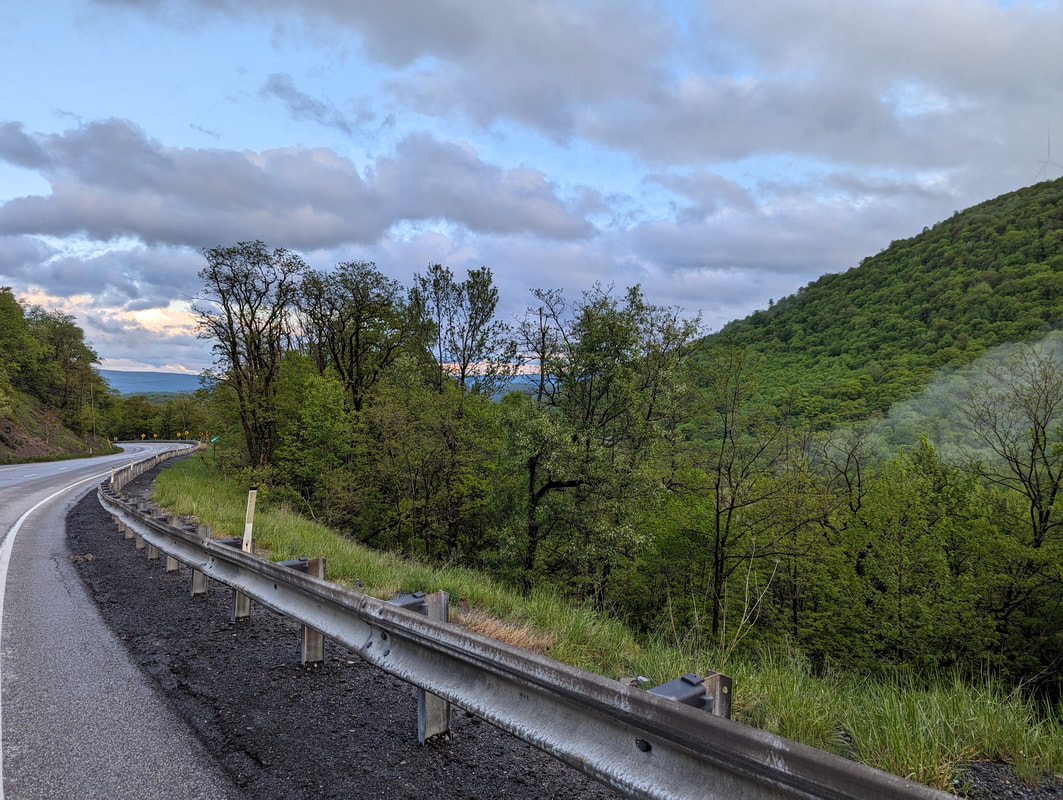
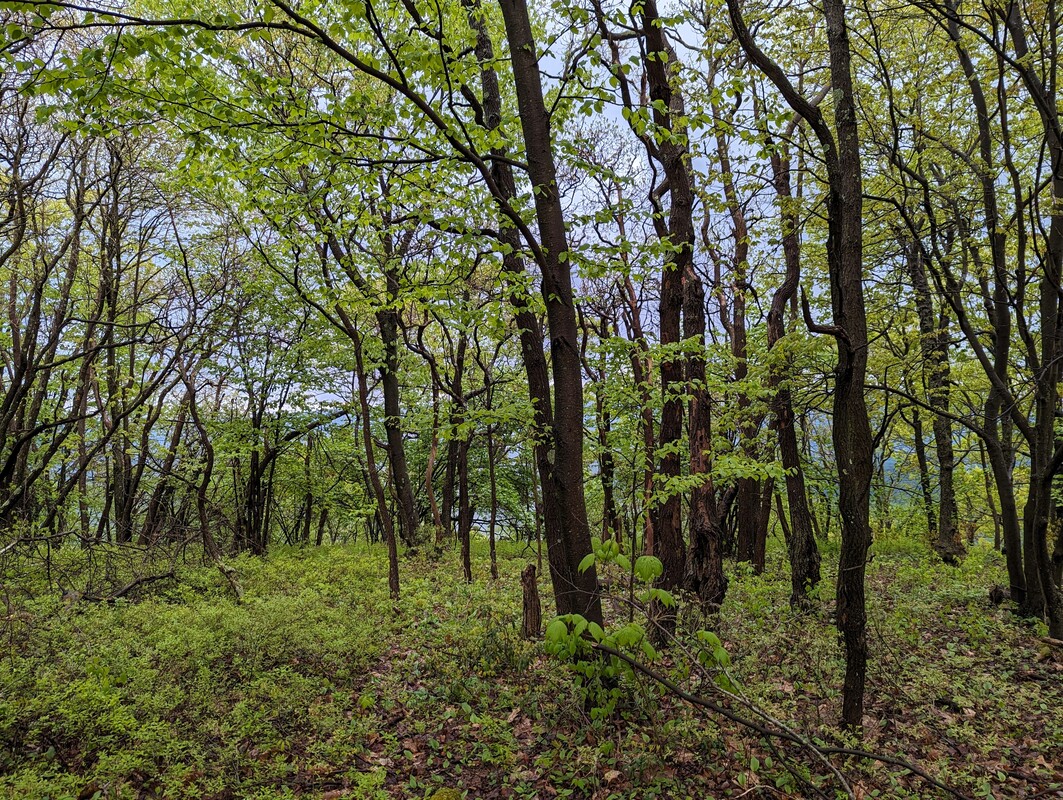
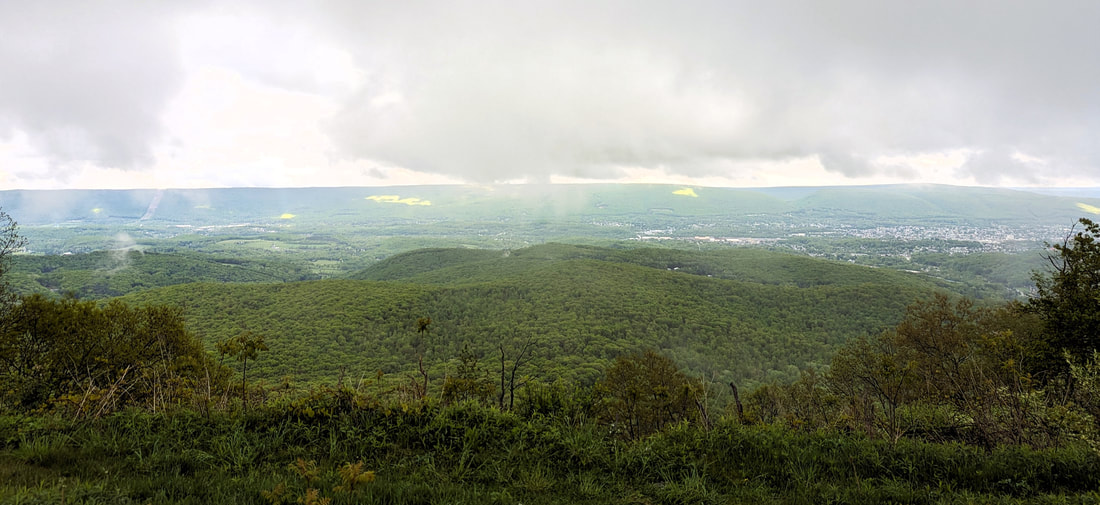


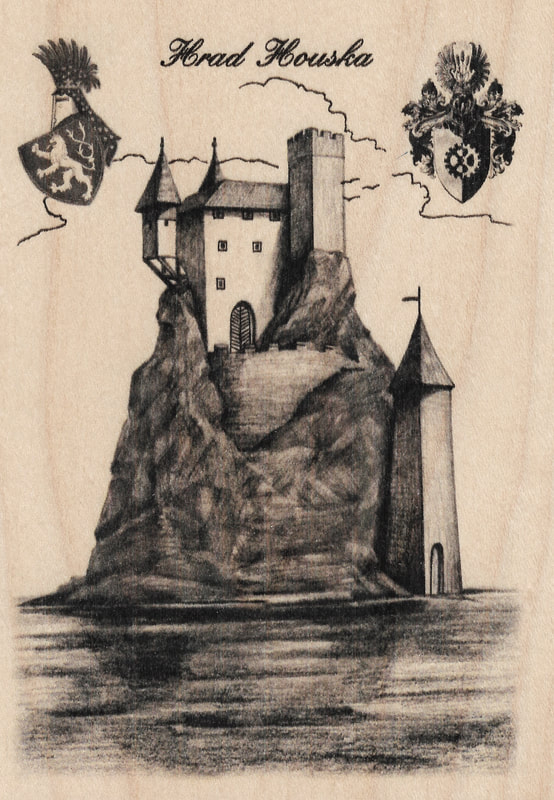
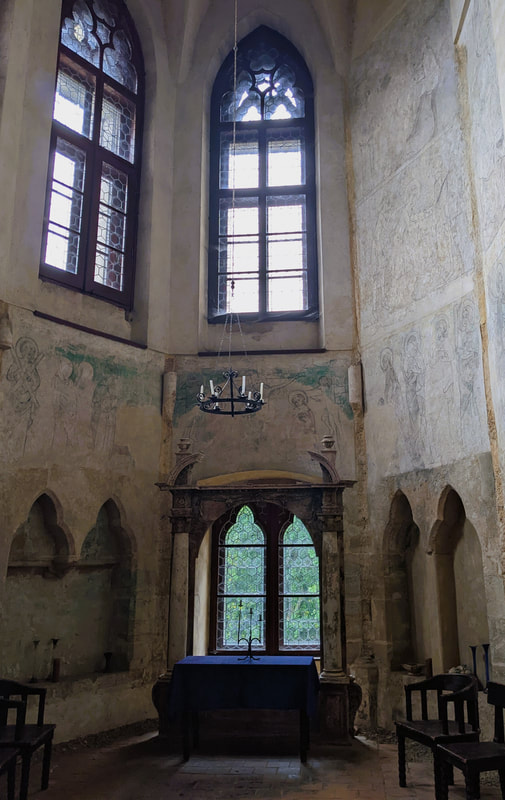
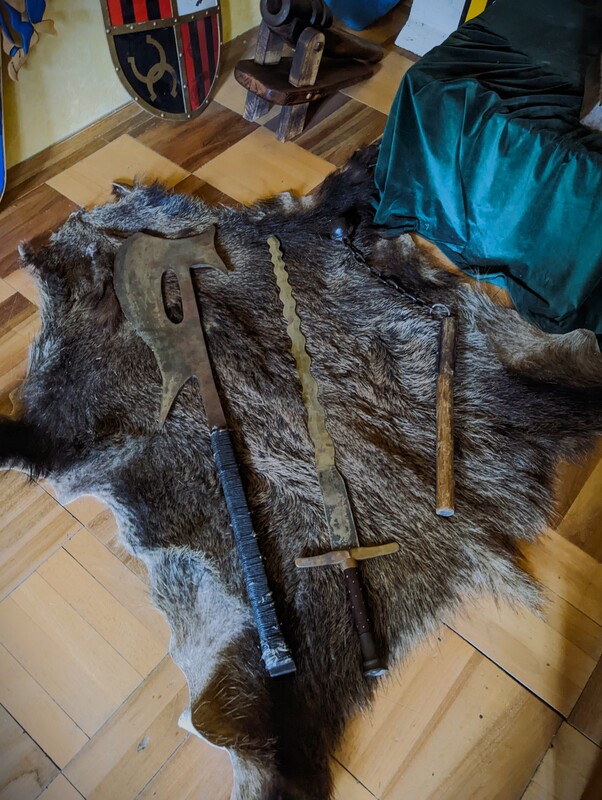
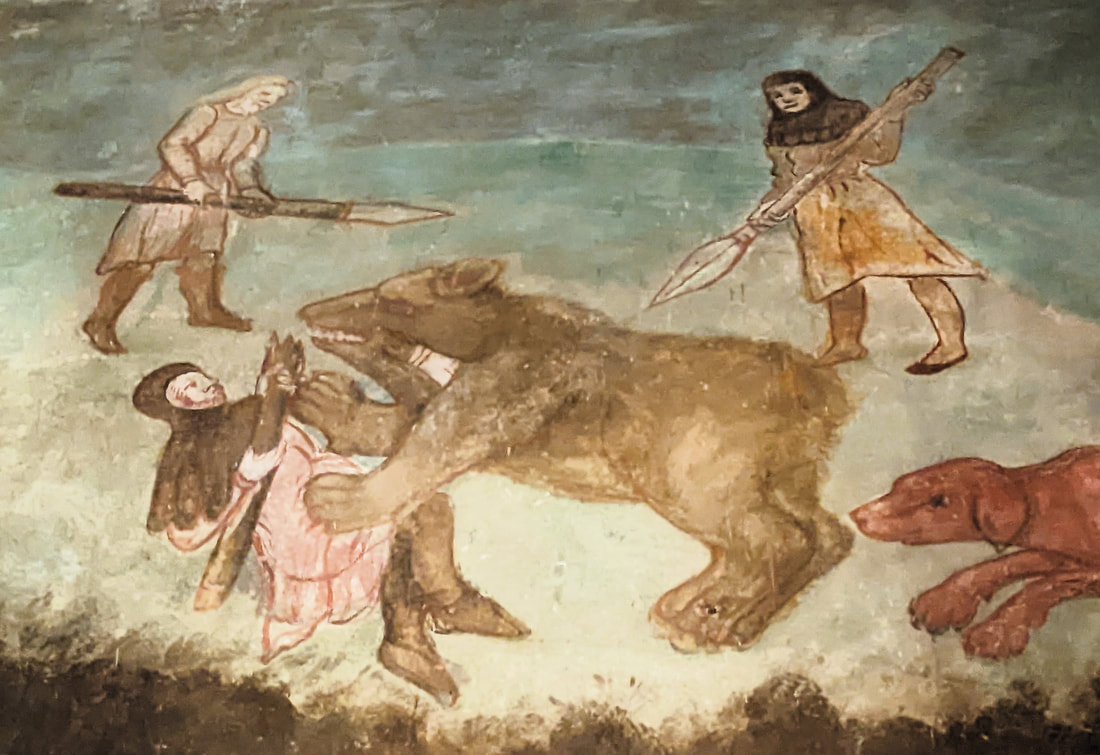


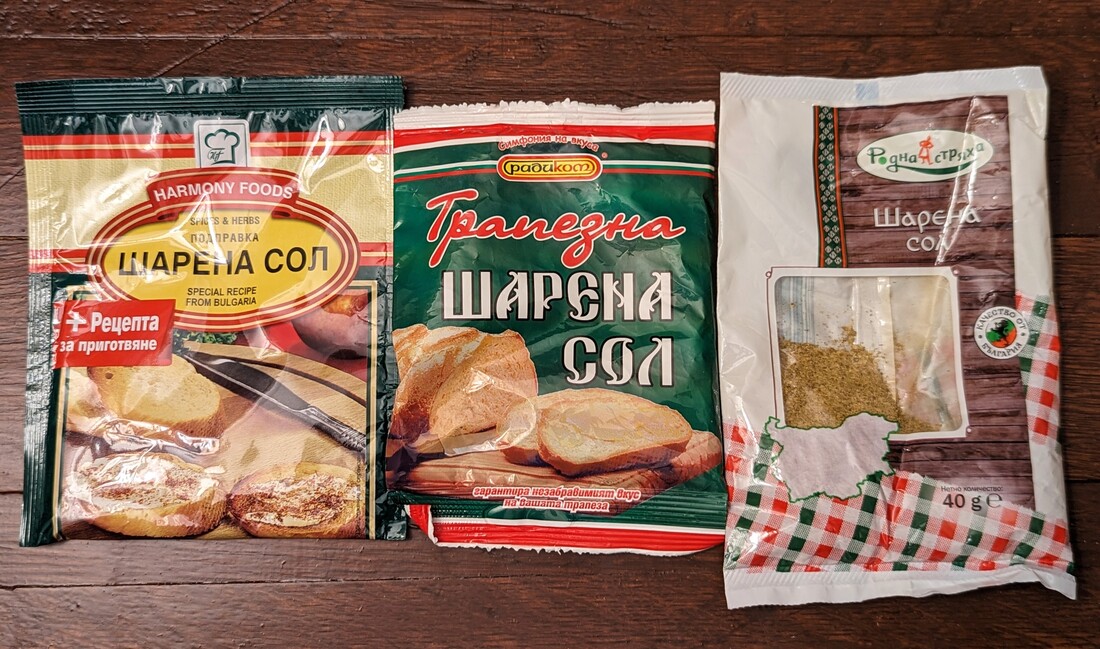
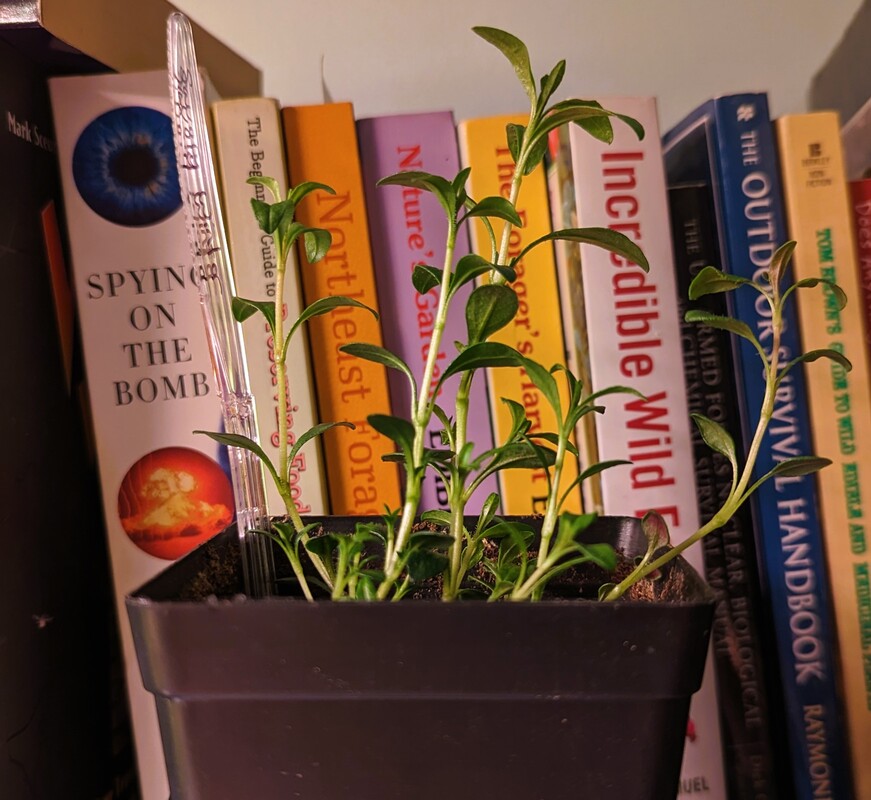


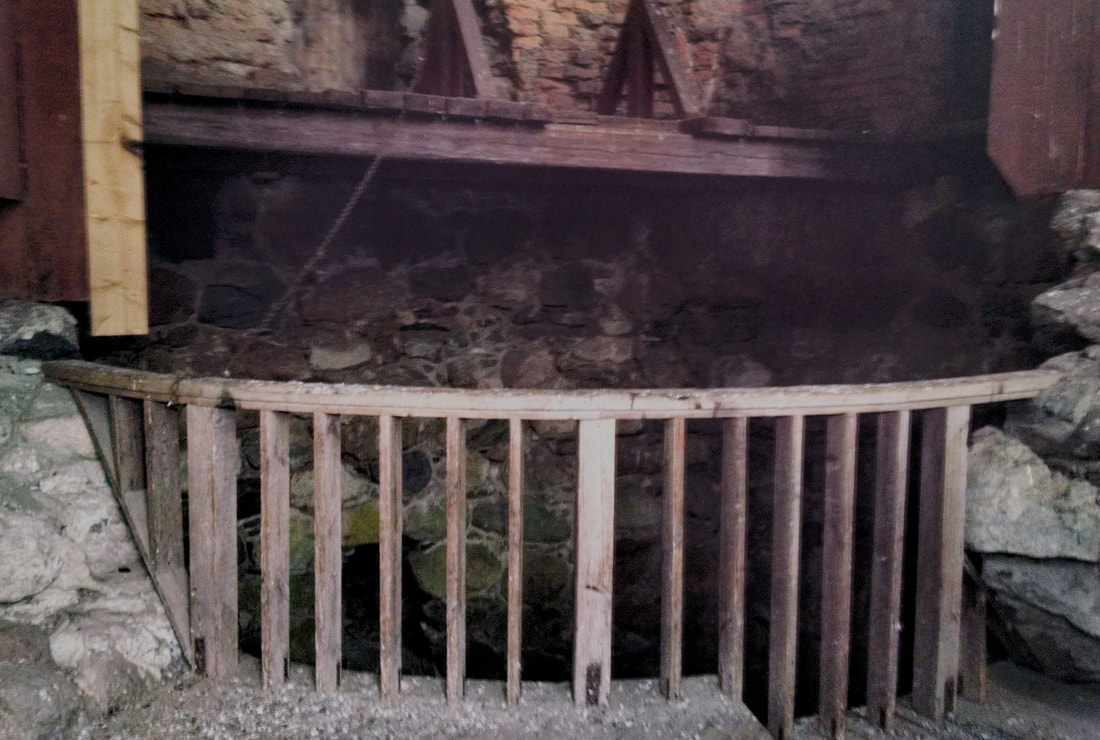
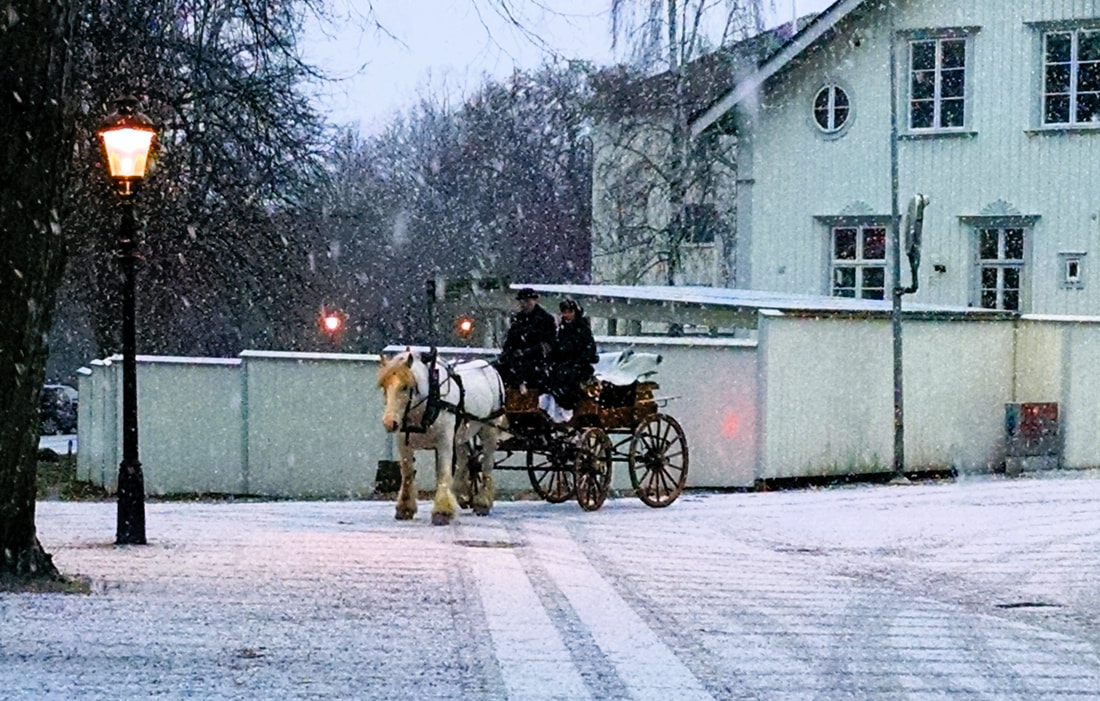
 RSS Feed
RSS Feed